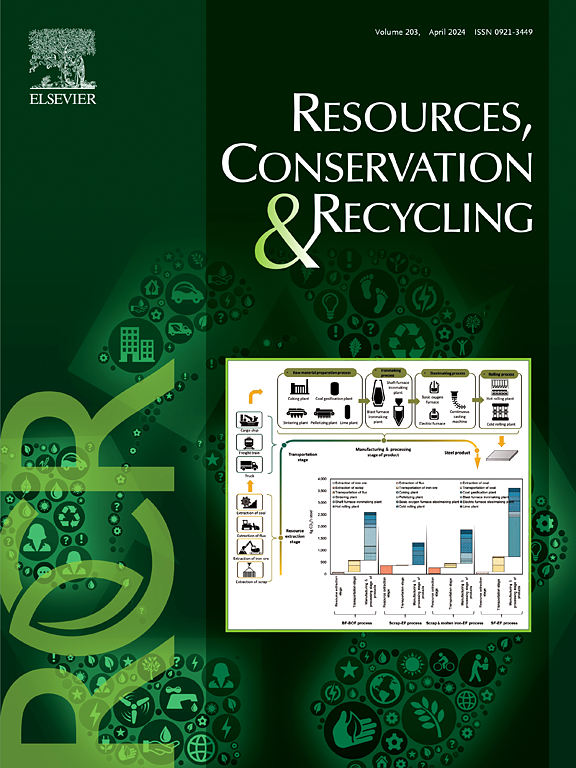熔盐电解铝废铝渣资源化利用研究进展
IF 11.2
1区 环境科学与生态学
Q1 ENGINEERING, ENVIRONMENTAL
引用次数: 0
摘要
铝回收必须优先考虑高可用性产品的开发,同时解决循环废物积累的挑战。传统的方法受到构图的限制,无法满足这些需求。电解技术提供了一个很有前途的解决方案,对这一领域的见解具有优化现有技术和为未来创新提供信息的潜力,从而支持铝工业的可持续发展。本文综述了熔盐电解铝回收技术的最新进展。它批判性地评估过程中的改进、它们的影响以及在实施过程中面临的工业挑战。本文的分析表明,电解工艺显著提高了回收产品的可用性。熔盐电解法在废物处理中非常有效,可以处理“死”金属和二次铝废料-通常排除在传统工业实践之外的材料。在回收铝渣时,需要考虑渣成分的复杂性和回收过程的可持续性。基于这些考虑,我们提出了两种新的铝渣回收策略。通过熔盐电解回收废物以生产高可用性的回收产品是hall - hsamrath工艺的一个有希望的替代方案,促进了铝工业的可持续性。本文章由计算机程序翻译,如有差异,请以英文原文为准。
A review of the upcycling of aluminum scrap and dross using molten salt electrolysis
Aluminum recycling must prioritize the development of high-usability products while addressing the challenges of circular waste accumulation. Traditional methods, constrained by compositional limitations, fail to meet these demands. Electrolysis technology presents a promising solution, with insights into this field possessing the potential to optimize existing technologies and inform future innovations, thereby supporting the sustainable development of the aluminum industry. This study provides a comprehensive review of recent advancements in aluminum recycling technologies using molten salt electrolysis. It critically assesses the improvements in the process, their impacts, and the industrial challenges faced during implementation. The analysis presented herein demonstrates that the electrolysis process significantly enhances the usability of recycled products. Molten salt electrolysis method is highly effective in waste treatment, enabling the processing of "dead" metals and secondary aluminum dross—materials typically excluded from conventional industrial practices. When recycling aluminum dross, the complexity of the dross composition and the sustainability of the recycling process need to be considered. Based on these considerations, we propose two novel strategies for aluminum dross recycling. Recycling waste through molten salt electrolysis to produce high-usability recycled products presents a promising alternative to the Hall-Héroult process, fostering sustainability in the aluminum industry.
求助全文
通过发布文献求助,成功后即可免费获取论文全文。
去求助
来源期刊

Resources Conservation and Recycling
环境科学-工程:环境
CiteScore
22.90
自引率
6.10%
发文量
625
审稿时长
23 days
期刊介绍:
The journal Resources, Conservation & Recycling welcomes contributions from research, which consider sustainable management and conservation of resources. The journal prioritizes understanding the transformation processes crucial for transitioning toward more sustainable production and consumption systems. It highlights technological, economic, institutional, and policy aspects related to specific resource management practices such as conservation, recycling, and resource substitution, as well as broader strategies like improving resource productivity and restructuring production and consumption patterns.
Contributions may address regional, national, or international scales and can range from individual resources or technologies to entire sectors or systems. Authors are encouraged to explore scientific and methodological issues alongside practical, environmental, and economic implications. However, manuscripts focusing solely on laboratory experiments without discussing their broader implications will not be considered for publication in the journal.
 求助内容:
求助内容: 应助结果提醒方式:
应助结果提醒方式:


